Following my accounts of individual artists associated with the German Romantic movement, it’s time to consider common features in their paintings that define their Romanticism. The first, which is characteristic if not distinctive, is showing figures that are looking away from the viewer into the landscape, so showing their back, hence in German Rückenfigur, ‘back-figure’.
Prior to the early paintings of Caspar David Friedrich, this was unusual but by no means remarkable. In the paintings of German Romantics, it becomes commonplace.

Friedrich’s famous Wanderer above the Sea of Mists (1818) features a bareheaded, blond man standing astride a rocky outcrop in the foreground, a walking stick in his right hand, looking in the same direction as the viewer. He and we look out over a blanket of lower cloud, pierced by occasional rock pinnacles and peaks. As we can’t see anything of his face, the figure remains anonymous and as mysterious as Friedrich’s view.
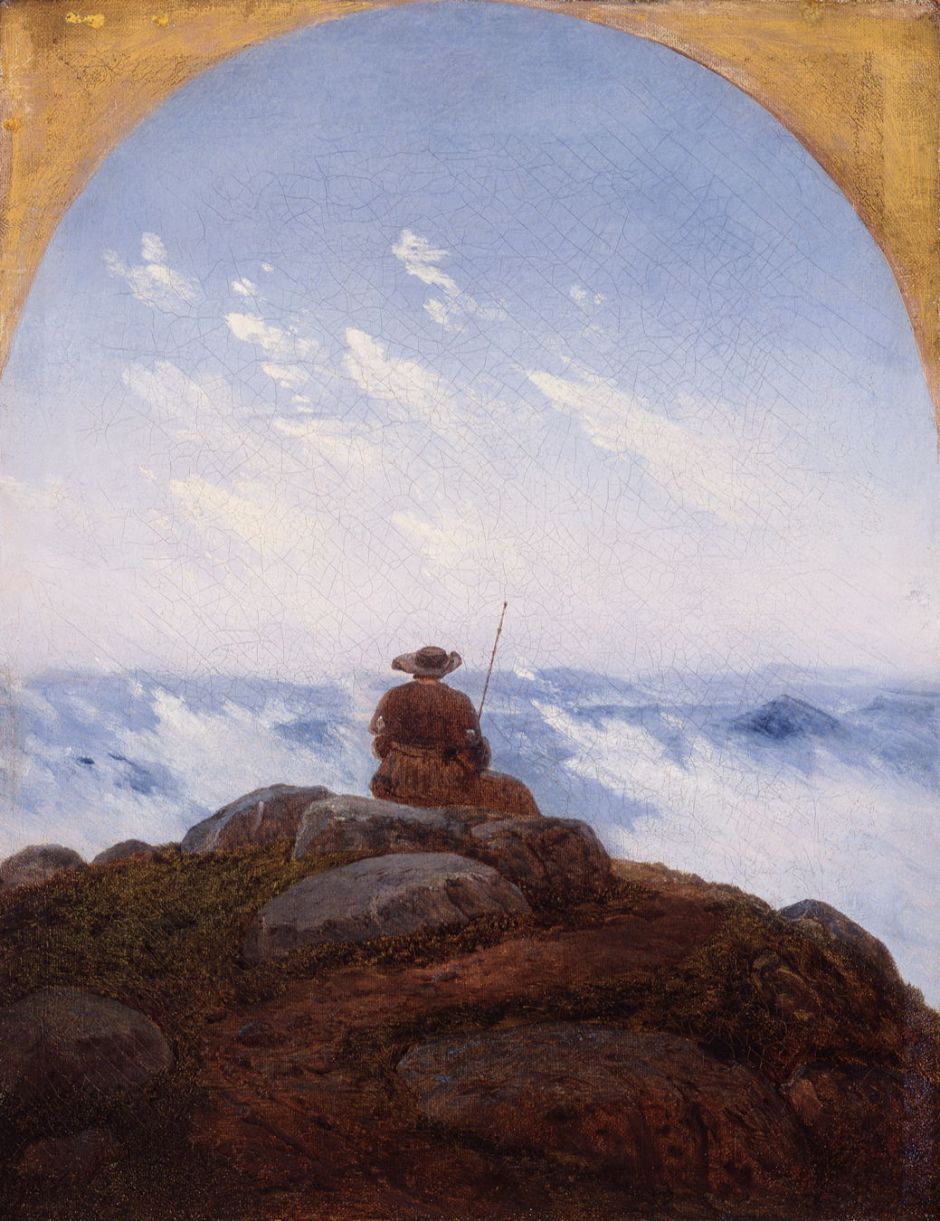
The same year, Carl Gustav Carus painted his related Wanderer on the Mountaintop, Pilgrim’s Rest, whose Rückenfigur is also a pilgrim or wanderer.

Friedrich’s honeymoon group portrait Chalk Cliffs on Rügen, painted at some time after 1818, features three Rückenfiguren, including the couple and a third person wearing a tricorn hat, who might represent Friedrich the artist as opposed to Friedrich the husband.
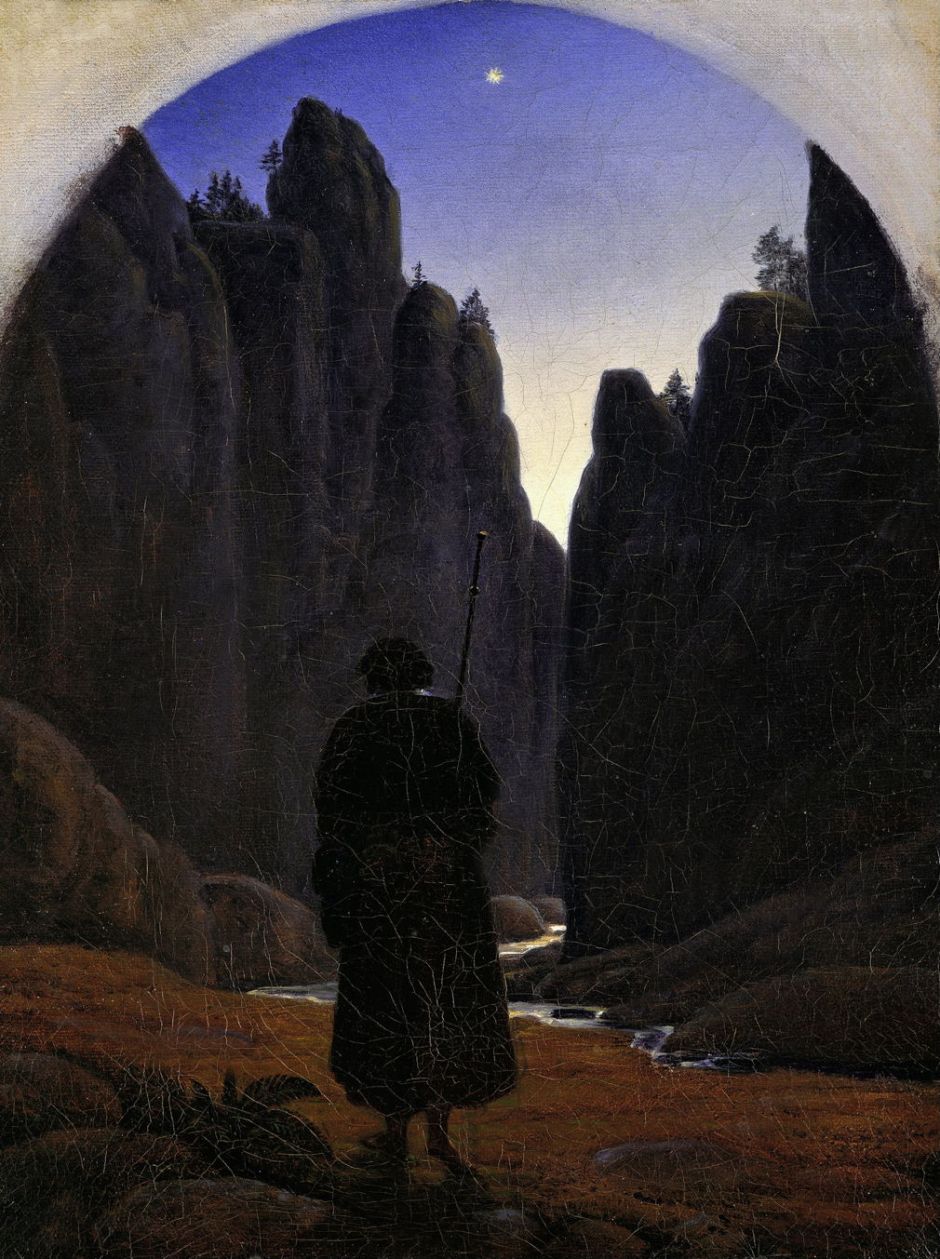
Carus’ wanderer returns two years later in Pilgrim in a Rocky Valley, here confronted by a narrow gorge.

Although less frequent in JC Dahl’s paintings, his Gulf of Naples. Moonlight from 1820-21 is more deeply influenced by Friedrich, with its Rückenfigur in a top hat looking out to sea.
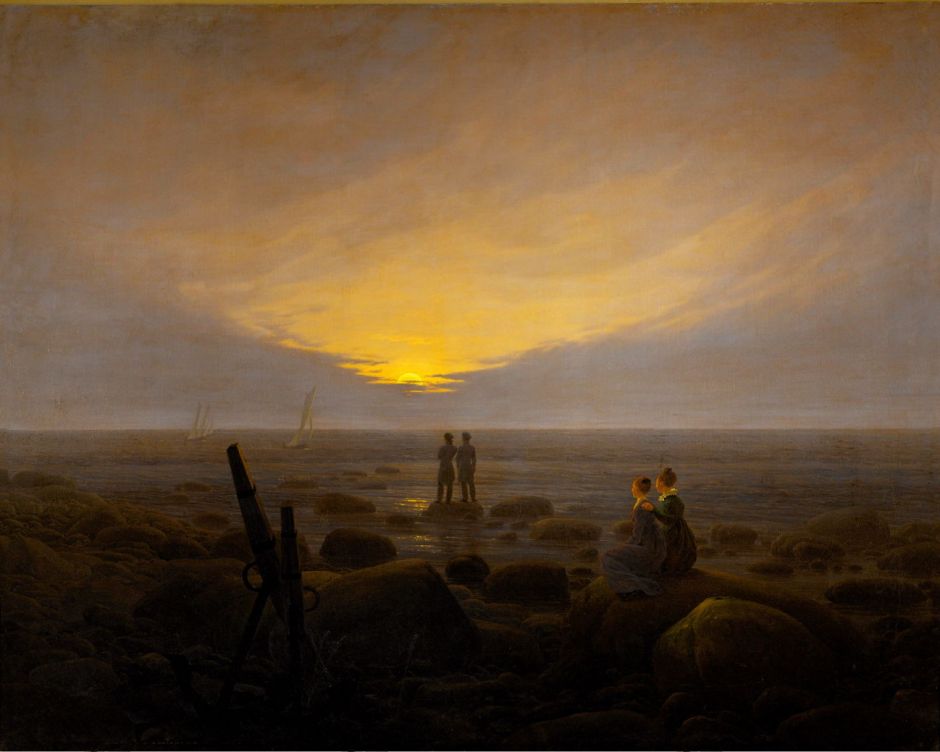
Friedrich’s Rückenfiguren in Moonrise over the Sea from about 1821 are distant and enigmatic again.

Two more are sharing their enjoyment of Carus’ View of Dresden at Sunset from about 1822, one of them wearing a top hat.

Friedrich painted several versions of a Man and Woman Contemplating the Moon, this in about 1827, with the pair dressed in clothes from a century before, and the man in a tricorn hat.
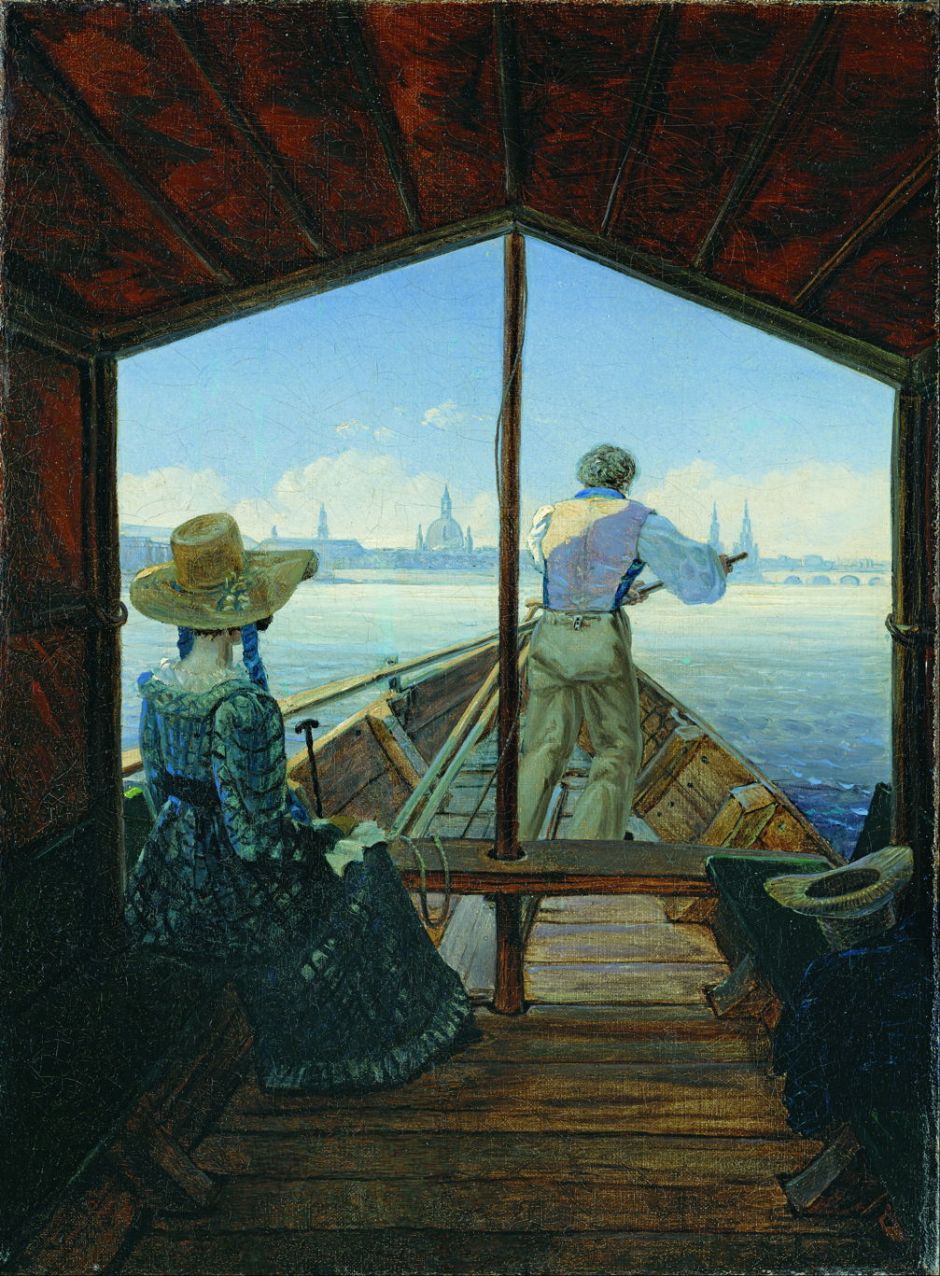
Carus also liked to frame views with foreground objects, as seen in his Barge Trip on the Elbe near Dresden (Morning on the Elbe) from 1827, with a young woman and her boatman as Rückenfiguren.
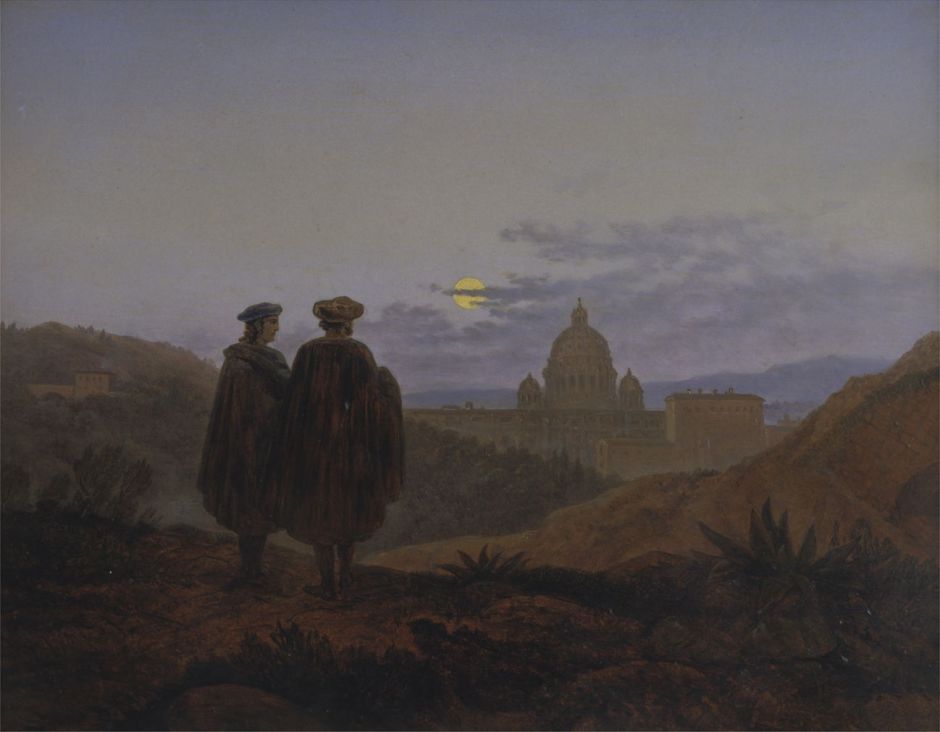
One of Carus’ later uses of the Rückenfigur is in Memories of Rome (Raphael and Michelangelo Looking at St. Peter’s) from 1839.

JC Dahl’s Larvik by Moonlight from the same year refers back to Friedrich’s coastal nocturnes, with one of its closer Rückenfiguren wearing a top hat.
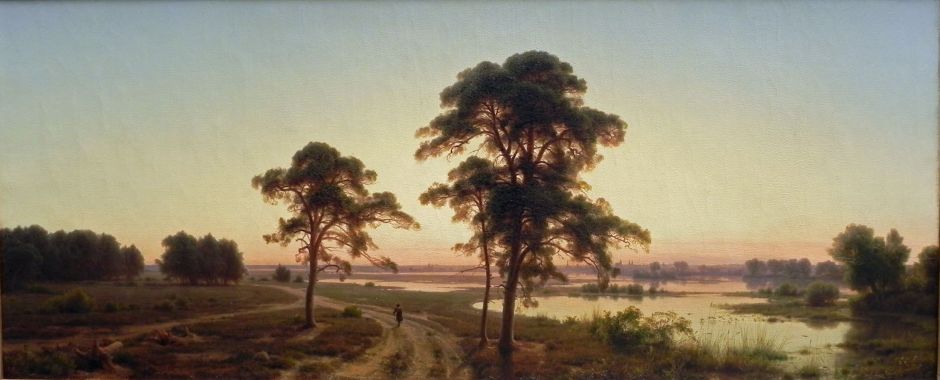
Although Carl Friedrich Lessing doesn’t appear to have been as enthusiastic about Rückenfiguren, the lone figure in his Silesian Landscape from 1841 is walking away into the dusk light.
The other artist of this period who painted several Rückenfiguren is Thomas Fearnley (1802–1842), who was a pupil of JC Dahl in 1829-30. Arnold Böcklin (1827–1901), who was influenced by the German Romantic movement, also adopted them, and they reappear in the balcony paintings of Gustave Caillebotte (1848–1894).

